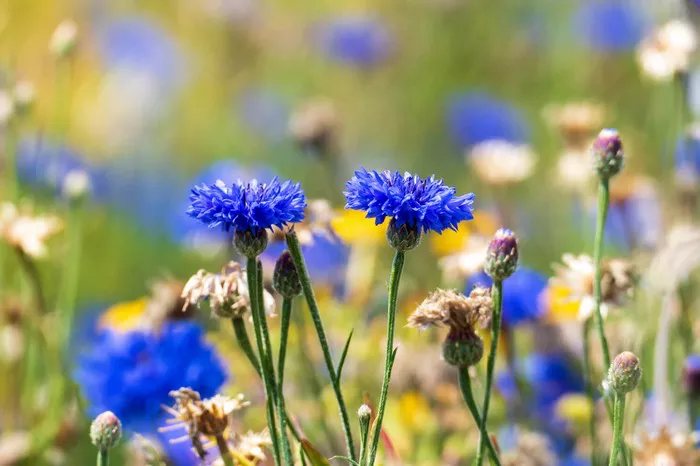Pollinators play a crucial role in the ecosystem by facilitating the reproduction of flowering plants. From bees and butterflies to birds and bats, these creatures contribute to the pollination of numerous plant species, ensuring the production of fruits, seeds, and new plants. However, not all flowers attract pollinators equally. Understanding the preferences of pollinators can aid gardeners, conservationists, and agriculturalists in promoting biodiversity and enhancing crop yields. In this article, we delve into the fascinating world of pollinator-flower interactions, exploring the factors that influence pollinator attraction and the types of flowers that tend to be favored.
The Importance of Pollinators
Before delving into the specifics of flower preferences, it’s essential to grasp the significance of pollinators in ecosystems and agriculture. Pollinators facilitate the transfer of pollen from the male reproductive organs (anthers) to the female reproductive organs (stigma) of flowers, enabling fertilization and subsequent seed and fruit production. This process is vital for the reproduction of approximately 75% of flowering plants globally, including many food crops.
Bees, in particular, are among the most efficient and important pollinators. However, other insects such as butterflies, moths, beetles, and flies, as well as birds and bats, also contribute significantly to pollination. Without pollinators, many plant species would struggle to reproduce, leading to reduced biodiversity and potentially impacting the entire food chain.
Factors Influencing Pollinator Attraction
Several factors influence the attractiveness of flowers to pollinators:
1. Color: Pollinators are often drawn to flowers with bright, contrasting colors, such as red, orange, yellow, and purple. These colors are easily visible against the green foliage and serve as visual cues for pollinators searching for nectar and pollen.
2. Shape and Size: The shape and size of flowers can also influence pollinator preference. For example, long-tongued bees are attracted to tubular-shaped flowers, while butterflies may prefer flowers with wide, flat landing platforms. Flowers with accessible nectar and pollen, arranged in a way that allows easy access for pollinators, are more likely to be visited.
3. Fragrance: Many flowers produce fragrances to attract pollinators. Scented flowers can be particularly appealing to nocturnal pollinators such as moths, which rely on olfactory cues to locate flowers in the dark.
4. Nectar and Pollen Rewards: The presence of nectar and pollen serves as a reward for pollinators, encouraging them to visit flowers. Flowers that produce abundant, high-quality nectar and pollen are more likely to attract and retain pollinators.
5. Flowering Time: The timing of flower blooming can also influence pollinator attraction. Some pollinators have specific flight seasons or periods of activity, and flowers that bloom synchronously with these periods are more likely to be visited.
Types of Flowers Preferred by Pollinators
While pollinators exhibit preferences based on various factors, certain types of flowers are generally favored across different species:
1. Wildflowers: Many wildflowers have evolved to attract a wide range of pollinators. Examples include milkweed, coneflowers, black-eyed Susans, and bee balm. These flowers often have bright colors, produce ample nectar and pollen, and are adapted to the local environment.
2. Native Plants: Native plants are well-suited to the local climate and soil conditions and have co-evolved with native pollinators. Planting native species in gardens, parks, and natural areas can provide essential habitat and food sources for pollinators, helping to support local biodiversity.
3. Herbs: Certain herbs are highly attractive to pollinators and can be easily incorporated into gardens and landscapes. Examples include lavender, mint, thyme, and sage. Not only do these herbs provide food for pollinators, but they also offer aromatic foliage for culinary and medicinal use.
4. Perennials: Perennial flowers, which return year after year, are valuable resources for pollinators, providing consistent food sources and habitat. Examples of perennial pollinator-friendly plants include asters, sedums, penstemons, and salvia.
5. Single-Petaled Flowers: Flowers with single petals, rather than double or multiple layers, are often easier for pollinators to access. Single-petaled varieties of roses, daisies, sunflowers, and marigolds are popular choices for pollinator gardens.
6. Native Trees and Shrubs: Trees and shrubs such as fruit trees, willows, elderberries, and serviceberries are important sources of nectar and pollen for pollinators. Planting a diverse array of trees and shrubs can provide year-round resources for bees, butterflies, and other pollinating insects.
Creating Pollinator-Friendly Gardens
Gardeners and land managers can take specific actions to attract and support pollinators:
1. Plant Diversity: Incorporate a variety of flowering plants in gardens and landscapes to provide a continuous source of nectar and pollen throughout the growing season. Choose plants with different flower shapes, colors, and blooming times to attract a diverse range of pollinators.
2. Avoid Pesticides: Minimize the use of pesticides, especially those that are harmful to bees and other pollinators. Instead, opt for organic gardening practices and integrated pest management strategies to control pests while protecting beneficial insects.
3. Provide Nesting Sites: Create habitat features such as brush piles, bare ground, and bee hotels to provide nesting sites for solitary bees and other pollinators. Many pollinators also nest in hollow plant stems, so leaving some stems standing over the winter can benefit overwintering insects.
4. Provide Water: Pollinators need water for drinking and maintaining hydration. Create shallow water sources such as birdbaths, puddling areas, or small ponds to provide pollinators with access to clean water.
5. Educate and Advocate: Raise awareness about the importance of pollinators and the actions individuals can take to support them. Encourage neighbors, community groups, and policymakers to prioritize pollinator-friendly practices in landscaping and land management.
Conclusion
Understanding what flowers pollinators like is essential for promoting pollinator health and biodiversity. By selecting and cultivating pollinator-friendly plants, individuals can create habitat and food sources for bees, butterflies, birds, and other important pollinating species. Whether in urban gardens, agricultural landscapes, or natural areas, supporting pollinators benefits ecosystems, agriculture, and human well-being. By working together to protect and enhance pollinator habitats, we can ensure a sustainable future for both pollinators and people.


